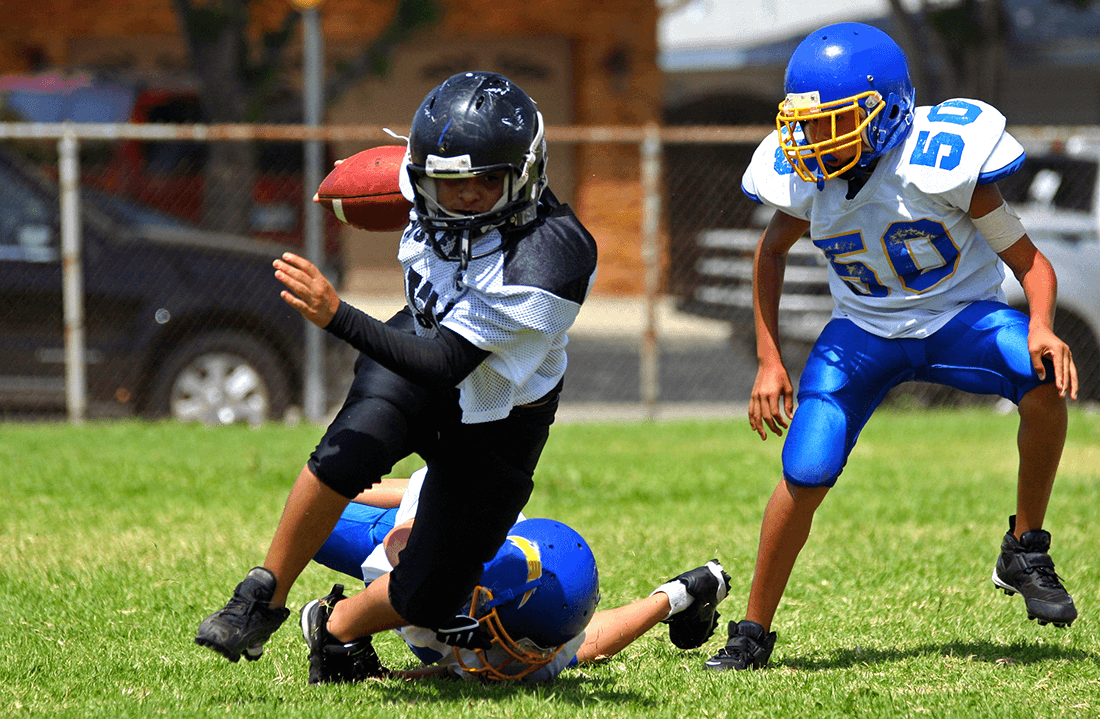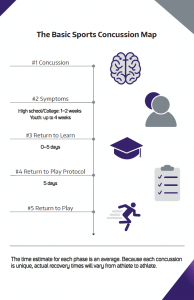
The Treatment is Usually Just Time
Recovering from a concussion is usually just a matter of time. Some people will improve almost immediately, while others take longer. Every athlete is different.
Experts recommend an initial period of brief rest followed by a gradual return to increasingly more demanding activities.
Researchers, doctors and other professionals have spent decades exploring the best ways to treat concussions and safely return athletes to activity after an injury. Nevertheless, there is still much to learn.
Most experts believe it’s helpful to take a day or two of rest from physical activity after a concussion, and to stop doing mentally difficult activities that make symptoms worse. For most people there are no special medications or other treatments. (See Myth: ‘Cocoon Therapy’ Helps a Concussion)
As early symptoms improve, it’s a good idea for the athlete to gradually get back to normal activities like homework, household chores, texting and using the internet. Students and parents may need to work with teachers and administrators to adjust school demands.
Most athletes fully recover within seven days
In high school and college athletes, it usually takes a week or two for all of the concussion symptoms to go away.
One study tracked a group of 2148 high school and college athletes over two years. They competed in football, soccer, ice hockey, lacrosse, wrestling, rugby and field hockey. All took preseason tests to show how their minds and bodies performed before they had an injury:
- Out of 100 athletes who had a concussion, about 70 were better in one week, and 30 were not
- In two weeks more than 90 out of 100 athletes were better, and 10 still had symptoms
Middle school and younger athletes often need more time to recover. Most get better within four weeks, but some take longer. (See Why do some people take longer to recover than others?)
A study from researchers at the University of Washington tracked 863 football players ages five to 14 years old over two seasons.
- Half took less than three weeks to get better
- Half took more than three weeks to get better
Gradual return to play
After an athlete is feeling normal again and returns to school, experts recommend a stepwise return-to-play program like the one below, supervised by a healthcare professional.
An athlete should allow at least 24 hours between milestones, and may progress to more demanding activities as long as the current activities do not make symptoms worse. Children should not return to full play until they are able to do school activities without worsening symptoms and a licensed healthcare provider knowledgeable about concussions has cleared them for play.
Stepwise return-to-play program (performed under medical supervision):
- Resting the body seems to help recovery, and resting the brain may also help. A child may miss a day or two of school, but longer is uncommon.
- Add light activities to increase the heart rate. These can include walking, swimming or stationary cycling at a low to moderate intensity. Hold off on weightlifting or other resistance training.
- Return to sport-specific drills and exercises. These can include running drills in soccer or football or skating drills in ice hockey. They should not include activities that involve head or body contact.
- Add complex noncontact training. Move on to more complicated training such as passing drills in ice hockey, lacrosse or football. Start back to resistance training, beginning with light weights.
- Full-contact practice. Return to normal full-practice and training activities only after seeing a health professional trained in concussion diagnosis and treatment, and receiving clearance.
- Return to competition and normal game play.
(Source: Consensus Statement on Concussion in Sport, Berlin 2016)

Most athletes improve quickly
Before giving an athlete the go-ahead to return to school and sports, a healthcare provider considers a variety of factors. The athlete should be free of concussion symptoms and have successfully returned to usual daily activities.
To see whether the brain has fully recovered, healthcare providers ask athletes about their symptoms and examine them using special tests that measure an athlete’s memory, concentration, balance and ability to process information.
The total time required for the symptoms to go away and for an athlete to return to play after a concussion can range from days to weeks or longer. For example, in a large study of football players from age five through college, most returned to play within one to 14 days. However, about 15 out of 100 took 30 days or longer to return to play.
Patience counts. Athletes who return too soon may not feel right, think normally or perform well in school or sports. They are also at risk for repeat injury and a more prolonged recovery.

